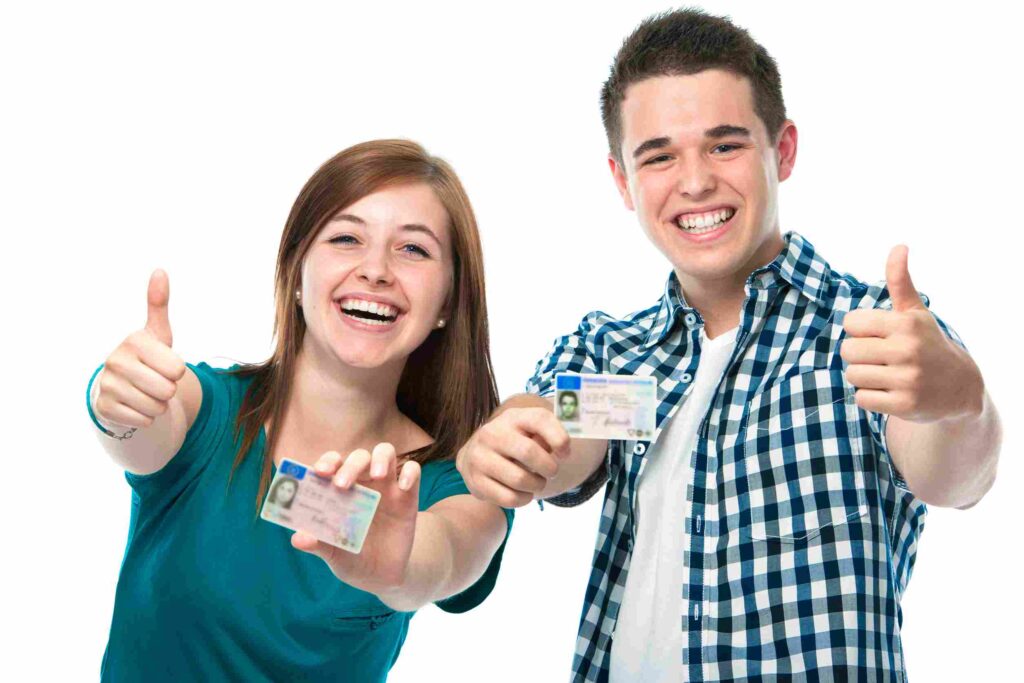As a teen in Minnesota, getting your driver’s license is an important milestone. However, it can be overwhelming to understand all the rules and regulations that come along with driving legally on public roads. This article will help you better understand all the laws so that you know what steps need to be taken before getting behind the wheel for the first time.
A High-Level Overview of Obtaining a Teen Driver’s License in Minnesota
In Minnesota, once a teens reaches the age of 16, they are eligible to apply for a driver’s license. To obtain a license, they must meet certain requirements including having held an instructional permit for a certain period of time, completing behind-the-wheel training hours, as well as passing the behind the wheel driving test.
The Graduated Driver’s License (GDL) Program in Minnesota requires that all teen drivers hold an instruction permit for at least six months, complete at least 50 hours of supervised driving practice before taking the written test. This includes at least 15 hours of night time driving. Once these requirements have been met, teens will need to schedule an appointment with a licensed examiner from the DMV for their behind-the-wheel driving test. During this test, applicants will be asked to demonstrate knowledge of the controls of the vehicle, as well as basic vehicle control skills such as turning, lane changing, corner backing, and parking, all while following all traffic laws throughout their test with an examiner present in the car observing them closely.
If successful during this portion of testing, applicants will receive their provisional driver’s license valid until age 18, when it can then be upgraded to an unrestricted full driver’s license if no violations have occurred during its use prior to that point.
The Graduated Driver’s License (GDL) Program in Minnesota
The Graduated Driver’s License (GDL) Program in Minnesota is designed to help teens gain driving experience and develop their skills in a safe, supervised environment. The program consists of three phases: the Instruction Permit phase, the Intermediate License phase, and the Full Unrestricted License phase.
- Instruction Permit Phase – Teens must be at least 15 years old to apply for an instruction permit. They must pass a written test on traffic laws and road signs as well as provide proof of identity and residency. During this phase, teens may only drive with a licensed adult who is 21 or older seated next to them in the front seat. In addition, they are not allowed to use any electronic devices while driving such as cell phones or GPS systems unless it is an emergency.
- Provisional License Phase – Teens must be at least 16 years old before applying for an provisional license, which requires passing a behind-the-wheel driving test administered by the Department of Public Safety (DPS). With this license comes additional restrictions, such as:
- No nighttime driving from 12am to 5am without parental supervision;
- Only one passenger under 20 years old is allowed in the vehicle;
- Distracted driving, including cell phone usage while operating a motor vehicle, is prohibited;
- Mandatory seatbelt use for all occupants;
- Zero tolerance policy regarding alcohol consumption prior to or during operation of motor vehicle.
Violation of any of these rules will result in suspension or revocation of driver’s license privileges until certain conditions are met again according to state law regulations set forth by the DPS.
- Full Unrestricted License Phase – Upon turning 18, teen drivers can apply for a full unrestricted license if they have held their intermediate license for six months without any violations or suspensions/revocations due to violations.
The Written Test for a Teen Driver’s License in Minnesota
The Written Test for a Teen Driver’s License in Minnesota is an important step in the process of obtaining an instructional permit. During the written portion of the exam, applicants will be tested on their knowledge of traffic laws and safe driving practices.
Questions may cover topics such as road signs, speed limits, right-of-way rules, parking regulations, alcohol awareness laws and more. It is important that applicants study these topics prior to taking the exam to maximize their chances for success.
The Behind-the-Wheel Driving Test in Minnesota
The Behind-the-Wheel Driving Test in Minnesota is a requirement for all teen drivers to obtain their provisional license. This test is administered by the Department of Public Safety. The purpose of this test is to ensure that teens have the knowledge, skills, and attitude necessary to safely operate a motor vehicle on public roads.
After passing the behind the wheel test, before obtaining their license, applicants must pass a vision screening as well as provide proof of identity, residency, and insurance coverage. Applicants must also complete an approved driver’s education course or at least 50 hours of supervised behind-the-wheel practice with an adult.
The behind-the-wheel test consists primarily of observing how one drives under various road conditions including city streets or highways with other vehicles present around them. It is important that applicants follow all instructions given by their examiner while demonstrating proper lane changes, turns, braking techniques and more. Additionally, good judgment must be shown when dealing with difficult situations such as merging into heavy traffic or making left turns across multiple lanes.
Insurance Requirements for Teen Drivers in Minnesota
In Minnesota, teen drivers are required to have certain types of insurance coverage to legally operate a motor vehicle. All drivers must carry liability insurance on their vehicle, which covers the costs associated with any damage or injury caused by an accident for which they are at fault. Drivers must also carry the minimum require coverages for no-fault (personal injury protection), uninsured motorist coverage, and uninsured motorist coverage. Drivers may also choose to purchase additional coverage such as collision and comprehensive insurance, and rental car reimbursement.
The cost of auto insurance for teen drivers can vary greatly depending on factors such as age, driving record, type of vehicle driven, and location. Generally speaking, however, teens can expect their premiums to be higher than those of older drivers due to their lack of experience behind the wheel. Additionally, traffic violations such as speeding tickets will result in increased rates, regardless of age or experience level.
Enjoy the Newfound Freedom of Becoming a Licensed Teen Driver
By following the steps outlined above, teens can get their driver’s licenses safely and responsibly, while simultaneously gaining valuable experience on the road. It is important to remember that obtaining a driver’s license is not just about getting from point A to point B; it involves taking responsibility for your own safety as well as those around you on the roads of Minnesota. Driving is a privilege that should be taken seriously, and all drivers must follow the laws in order to ensure everyone’s safety.
We hope your teen is never involved in an accident. However, if they are, and have suffered an injury due to someone else’s negligence, the experienced attorneys at Nelson Personal Injury can help. We specialize in personal injury cases throughout Minnesota and have recovered millions of dollars for our clients. Our knowledgeable lawyers are here to listen to your story and fight for the justice that you deserve. Contact us today for your free consultation.






